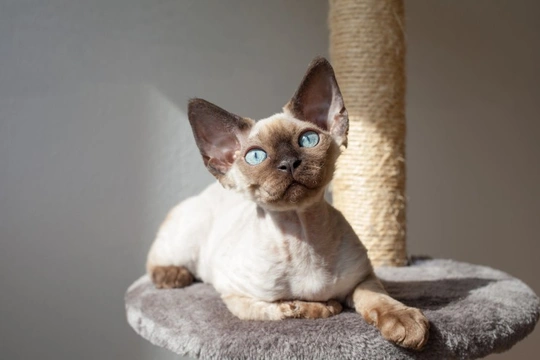
Is chocolate toxic to cats?
Virtually every dog owner, and even many of the non-dog owning population as well knows that chocolate should not be given to dogs as it is toxic to them, and likely to lead to minor digestive upsets if only a small amount of chocolate is digested, going as far as potentially proving fatal if your dog eats a lot of chocolate or other cocoa-based products.
However, something that is less well known and less frequently talked about in pet owning circles is the fact that chocolate is also toxic to cats, and should not be fed to them either.
While cats are less likely to get a taste for chocolate than dogs are, cats can and sometimes do try to eat chocolate or cocoa products nonetheless, and so, it is a good idea for cat owners to develop a basic understanding of how chocolate and cocoa can pose a risk to the health of cats, and how to avoid this happening. Read on to learn more.
Why would cats eat chocolate or cocoa?
On the surface of it, it may seem largely irrelevant that cats should not eat chocolate, as chocolate is not likely to be something that appeals to cats and that they would potentially try to eat! While it is certainly true that cats are much less likely to be interested in eating chocolate than dogs are, it can still happen, particularly if any of the following factors come into play:
- Drinks of hot chocolate or cocoa made with milk or cream may appeal to your cat, as they might want to eat the cream or milk.
- Milk chocolate is also rich in milk as well as cocoa, and the scent of it can appeal to cats.
- Chocolate cake made with cream fillings or other substances that cats like can also be a risk.
- Some cats that are adept beggars and scavengers may quickly eat anything dropped or that they can swipe, before they even really process what they are eating!
- Finally, if you use cocoa shell husks or cocoa mulch in your garden, this may also pose a potential risk, so it is wise to switch to an alternative product instead.
How much cocoa is harmful to cats?
No amount of chocolate should ever be considered as safe or suitable for cats, and you should never offer your cat chocolate treats, scraps, or anything else that has cocoa or chocolate in it. However, if your cat does manage to eat some cocoa or chocolate, potentially by means of the factors listed above, it is how much they eat and how high in cocoa it is that determines the eventual effect it will have on your cat.
The element in cocoa and chocolate that is dangerous to cats is called theobromine, and dark or black chocolate and pure cocoa are the richest sources of this, with milk chocolate containing less, and white chocolate little to none. Theobromine has a toxic effect on the liver of cats, and can lead to liver failure and systemic toxicity.
Therefore, how much cocoa or chocolate will be potentially dangerous to your cat will depend on a combination of how much theobromine was in the product, which depends again on the type and quantity of chocolate or cocoa that they eat, and also, the size of your cat, and their general health.
Cats with an existing liver problem will be at higher risk of toxicity than an otherwise healthy cat, but even a healthy cat can become very ill from eating chocolate.
While no cat is likely to eat a whole chocolate bar, and as a rule, cats who taste chocolate will not be interested in eating it, it can be handy to be able to refer to these basic figures on theobromine amounts in chocolate and toxicity rates:
- Ingesting anything below 10mg of theobromine is unlikely to have more than a mild negative effect on your cat, unless they are very small or have a weak liver.
- Ingesting more than 10mg may well place your cat at risk of illness, and so it is wise to contact your vet.
- Ingestion of 40-50mg or more of theobromine may prove fatal, and should be treated as an emergency for cats.
- A small, funsize bar of milk chocolate such as Dairy Milk that weighs about 25g will contain about 50mg of theobromine, so even this small amount of chocolate is potentially life-threatening to cats.
- The same amount of black or dark chocolate is much richer in cocoa, containing up to 200mg of theobromine.
What happens if your cat eats chocolate or cocoa?
If your cat does eat chocolate or cocoa, either mistaking it for something else or because they were tempted by milk or cream, you should first of all try to identify how much of it they ate, and find the packaging for the chocolate product to refer to. Contact your vet immediately and give them all of the information they will ask for, which will include things like the size and general health of your cat, how much they ate, and when they ate it.
Follow your vet’s advice when it comes to either taking your cat to the clinic or monitoring them carefully at home, and remember, if your cat is likely to have eaten a lot of chocolate or cocoa, this should be treated as an emergency, and they will need to go to the vets.



